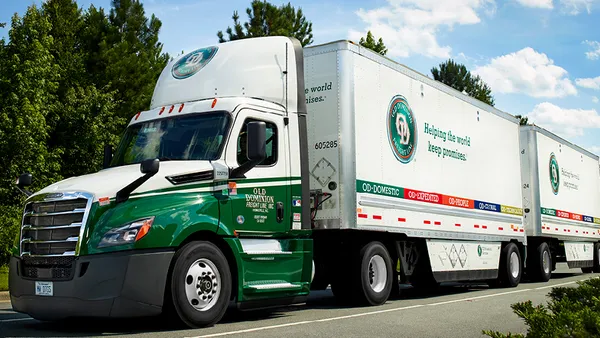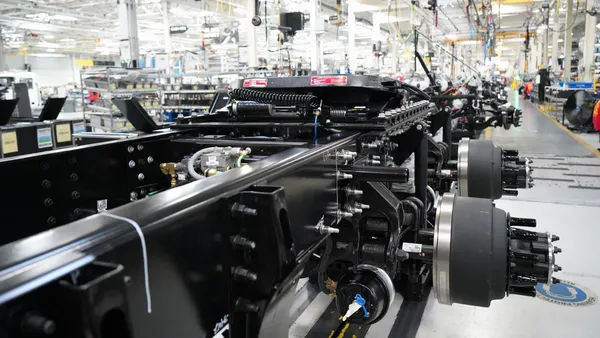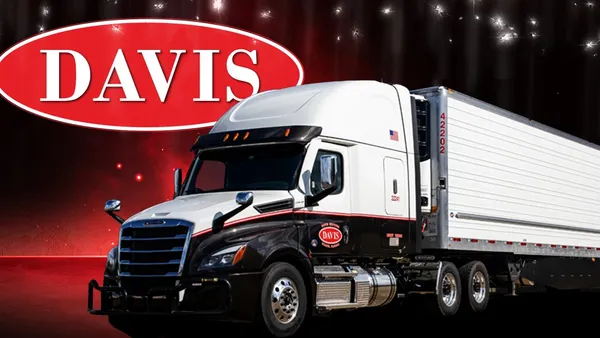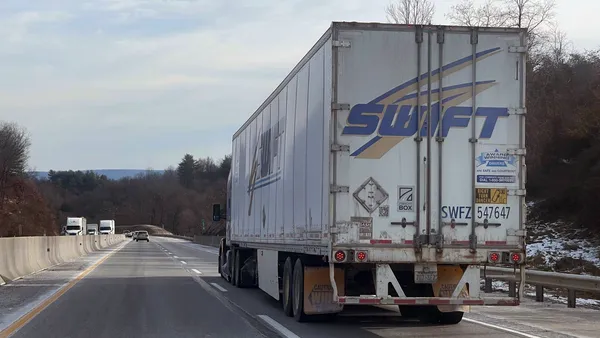Dive Brief:
- Transport America, a TFI subsidiary in Minnesota, will add more capacity for dedicated TL operations. Transport America officials said in a Friday news release that there is an "accelerating customer desire" for committed capacity and experienced drivers.
- Transport America, which offers irregular-route TL service and said it will continue to do so, said dedicated operations are attractive to shippers because they gain assurance of TL capacity, which is tight nationally. The dedicated and regular TL routes also helps in driver recruitment and retention, assuring them regular miles and hours, Transport America officials said.
- The push for dedicated service comes as "network imbalances continue to push [TL] shipments into the spot market and place pressure on pricing," according to a Friday tweet from DAT.
Dive Insight:
The demand for dedicated is emerging as a trend, as shippers are increasingly unable to find trucks in a TL market roiled by tight capacity, a driver shortage and persistently high spot rates. The advantage for Transport America in the current market is that it makes the company more attractive to drivers, because they prefer dedicated carriage with its regular routes as opposed to irregular routes. Irregular routes often bring unprofitable backhauls or deadheading.
Transport America also sees an opportunity to charge deeper into the dedicated market, which is competitive and includes such big carriers such as Knight-Swift and Werner. The advantages to dedicated carriage over irregular TL aren't just dollars: Experts believe dedicated carriage takes volatility out of fleet managers' planning.
The volatility is making itself known in the current market. As more freight than expected comes through the supply chain, contract carriers are rejecting 25% of electronically tendered freight, pushing more loads onto the spot market, Brent Hutto, chief relationship officer for Truckstop.com, told Transport Dive this month.
National average spot TL rates for dry van and reefer jumped to new all-time highs in October, DAT said in a Thursday news release. Its October Truckload Volume Index, a measure of dry van, reefer and flatbed loads moved by TL carriers, rose 3.8% from September and was 8.7% higher compared to October 2019.
Rates will continue to rise through Q4 of 2020, said Ken Adamo, DAT chief of analytics, in a news release. Dry van rates are up 95 cents per mile since May 1, he noted.
Part of the reason for the persistent demand is COVID-19. The Transportation Intermediaries Association, in its Q3 report, said third-party logistics shipments were up 16% YoY in Q3.
"The impact of COVID on freight was noticeable for truckload with volume returning to [Q1 2019] levels," the report said. "The data also indicates shippers relied on 3PLs more as 3PL TL volume grew more than the overall TL market."












